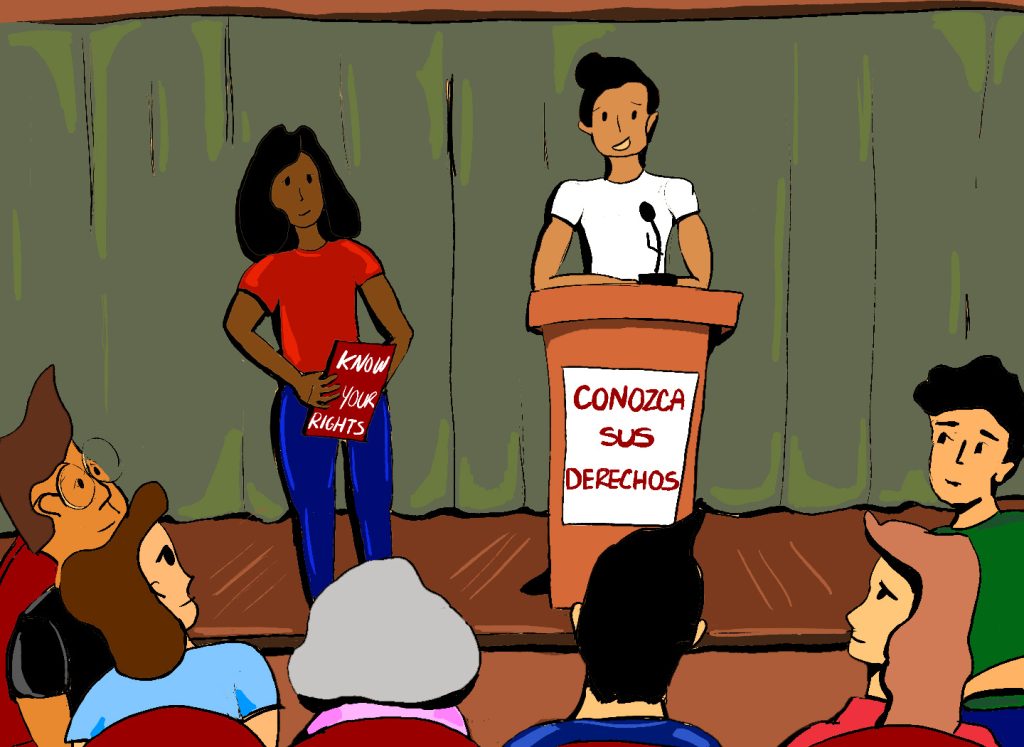Heightened Anxiety and Community Response in Chicago Amidst Immigration Enforcement Actions
The inauguration of President Donald Trump in 2017 ushered in a period of heightened anxiety for undocumented individuals and communities of color across the United States. The Department of Homeland Security (DHS), under the Trump administration, announced a significant expansion of immigration enforcement efforts, including targeted arrests and deportations by Immigration and Customs Enforcement (ICE). Chicago became a focal point for these operations, casting a shadow of fear and uncertainty over previously vibrant neighborhoods. The fear was further exacerbated by the rapid spread of rumors and misinformation, particularly online, regarding ICE activity.
This climate of fear had a profound impact on residents like Rene, a construction worker from Chihuahua, Mexico, living in Chicago’s Back of the Yards neighborhood. While acknowledging the importance of staying informed, Rene expressed frustration at the prevalence of unsubstantiated online claims, often originating within the Hispanic community itself, which amplified existing anxieties. He stressed the need for critical evaluation of information and reliance on credible news sources. The uncertainty surrounding the criteria for targeted arrests also fueled widespread apprehension, as residents like Diana Acevedo, a graphic designer, questioned who might be affected and how. The fear of separation from family and friends led to a decline in community gatherings and a sense of isolation.
In response to this escalating crisis, community organizations like the Illinois Coalition for Immigrant and Refugee Rights (ICIRR) and Organized Communities Against Deportations (OCAD) mobilized to provide vital support and resources. Their efforts focused on empowering individuals with knowledge of their rights, dispelling misinformation, and coordinating rapid response networks to verify ICE activity and provide immediate assistance. These organizations recognized that accurate information and community solidarity were crucial tools in mitigating the impact of the enforcement actions.
The ICIRR implemented a rigorous verification process for reports of ICE activity received through their hotline. Trained rapid response teams were deployed to neighborhoods to gather firsthand information, confirm arrests, and connect families with legal services. Brandon Lee, the communications director at ICIRR, emphasized that knowing one’s rights and uniting as a community were essential forms of protection. This proactive approach allowed the organization to counter misinformation and provide accurate updates to residents.
OCAD adopted a similar strategy, treating every hotline call as a potential ICE operation. They shared verified information with their network of 23 rapid response groups across Chicago, ensuring a coordinated community response. Antonio Gutierrez, co-founder and strategic coordinator for OCAD, highlighted the importance of correcting misinformation circulating on social media, emphasizing that their goal was not to help individuals evade arrest but to educate them about their legal rights.
These organizations understood that an ICE arrest was not necessarily the end of the road. They provided comprehensive support to those detained, including legal representation, evidence gathering, and community mobilization for deportation defense. Gutierrez stressed that an arrest often marked the beginning of a legal battle, and OCAD was committed to supporting individuals throughout the process. This holistic approach offered a glimmer of hope in a challenging situation.
The work of ICIRR and OCAD had a tangible impact on the community. Residents reported feeling more secure knowing their rights and having access to reliable information and support networks. One Back of the Yards resident, who preferred to remain anonymous, expressed a sense of empowerment, emphasizing that there were ways to navigate these difficult situations. This sentiment reflected the broader impact of these organizations in fostering resilience and hope within the community. Their efforts helped to counter the intended effects of the enforcement actions, which aimed to instill fear and hopelessness. Instead, they empowered individuals and strengthened community bonds. The proactive approach of these organizations, coupled with community engagement, created a powerful network of support that helped mitigate the impact of the intensified immigration enforcement efforts. Their work underscored the importance of community-based responses in protecting vulnerable populations and upholding human rights.


